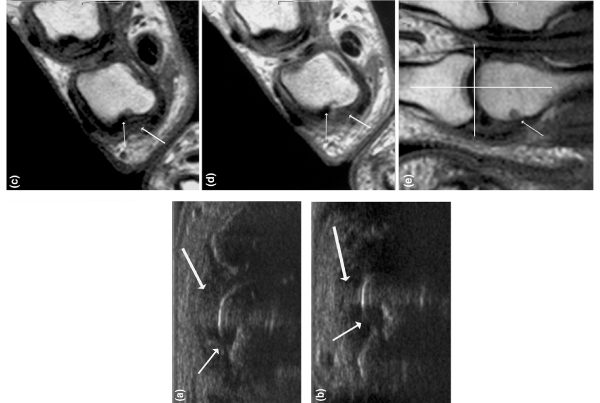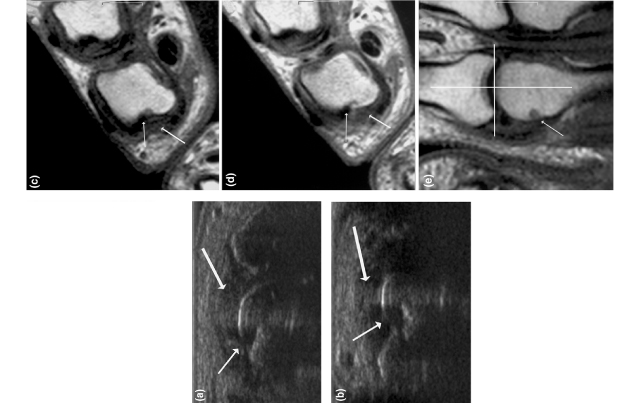Bone Edema on MRI May Predict Rheumatoid Arthritis

Researchers have pursued various strategies for developing a predictive model for identifying those patients with early symptoms of arthritis who will develop rheumatoid arthritis (RA), says Adrian Moyer, MD, a musculoskeletal imaging specialist at Scottsdale Medical Imaging Ltd. There are models based on blood tests, imaging and patient profiles. In a 2011 study, Danish researchers proposed an MRI-based model for early diagnosis of RA in patients with undifferentiated arthritis (UA). Their model correctly predicted 82 percent of the patients who developed RA. They concluded that MRI evidence of bone edema in the metatarsophalangeal and wrist joints is an independent predictor of future RA.

Adrian Moyer, MD
A 2001 meta-analysis by British researchers concluded that beginning early use of disease-modifying antirheumatic drugs (DMARDs) significantly reduces inflammation and joint destruction associated with rheumatoid arthritis (RA). Determining which patients with undifferentiated arthritis (UA) will progress to RA, however, has been problematic. In an evidence summary for a point-of-care guide in the journal American Family Physician, only about 28 percent of patients initially diagnosed with UA go on to develop RA.
Over the last decade, researchers have pursued various strategies for developing a predictive model for identifying those patients with early symptoms of arthritis who will develop RA, says Adrian Moyer, MD, a musculoskeletal imaging specialist at Scottsdale Medical Imaging Ltd. (SMIL). There are models based on blood tests, imaging and patient profiles. In a 2011 study, Danish researchers proposed an MRI-based model for early diagnosis of RA in patients with UA. The study involved 116 patients without a specific rheumatologic diagnosis, but with two or more tender joints and/or two or more swollen joints among the metacarpophalangeal, proximal interphalangeal, wrist or metatarsophalangeal (MTP) joints for more than six weeks but less than 24 months.
Their model correctly predicted 82 percent of the 27 patients who developed RA, with a sensitivity of 81 percent and specificity of 82 percent. They concluded that MRI evidence of bone edema in the MTP and wrist joints is an independent predictor of future RA in patients with early UA. Moyer cautions that this study was based on a small number of patients and needs much more exploration to be validated. He noted that it is difficult to develop a single test for spectrum diseases, such as RA.
“To develop a single imaging test specific for a disease like RA is very difficult,” Moyer says, “whereas MRI to look for other causes of pain is straightforward, and evaluation of early bone changes when RA is suspected is fairly simple. Correlation with physical exam and laboratory findings is required to finalize this diagnosis. The model of using MRI within the context of other tests is still early and needs much more experience to be able to develop an accurate, predictive
model based solely on imaging alone.”
SOURCES:
1. Quinn MA, Conaghan PG, Emery P. The therapeutic approach of early intervention for
rheumatoid arthritis: what is the evidence? Rheumatology. 2001;40: 1211-1220.
2. Mochan Eugene, Ebell Mark. Point-of-Care guides: predicting rheumatoid arthritis risk in adults
with undifferentiated arthritis. American Family Physician. 2008;77(10):1451-1453.
3. Duer-Jensen A, Horslev-Peterson K, Hetland ML, et al. Bone edema on magnetic resonance
imaging is an independent predictor of rheumatoid arthritis development in patients with early
undifferentiated arthritis. Arthritis & Rheumatism. 2011;63(8):2192-202.


